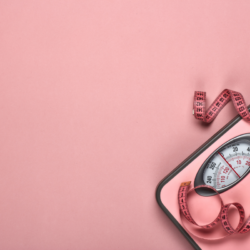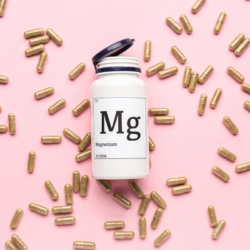Bladder weakness is a common problem that can affect men and women of any age. Whether as a result of pregnancy, surgery, ageing or any other factor, bladder weakness can have a significant impact on quality of life and self-confidence. Fortunately, there are many natural methods known to help prevent and reduce bladder weakness, including the use of perineal electrostimulation.
What is urinary incontinence?
Urinary leakage, a term often mentioned but rarely explored in depth, deserves particular attention for its significant impact on quality of life. This condition, commonly perceived as a simple inconvenience, in reality conceals a complexity and diversity of manifestations that require in-depth understanding.
The medical definition of bladder weakness refers to any involuntary loss of urine. It is crucial to recognise that this definition encompasses a variety of situations, from occasional light losses to more severe and chronic incontinence. This diversity of symptoms underlines the importance of a personalised approach to diagnosis and treatment.
One of the key points to consider is that bladder weakness is not just a physical problem. It also has a profound psychological impact. The embarrassment and anxiety associated with the condition can lead to social withdrawal, reduced self-esteem and even depressive symptoms. It is therefore essential not to minimise this condition to its physical aspects, but to recognise and address its psychological repercussions as well.
It is also important to dispel the myth that bladder weakness is an inevitable consequence of ageing. Although the prevalence of this condition increases with age, it is not a normal part of the ageing process. This misconception can lead to a passive acceptance of the problem, when in fact there are many treatments and interventions that can improve or resolve these symptoms, regardless of the patient’s age.
Finally, it is imperative to stress that bladder weakness is not unique to women, contrary to popular belief. Men can also suffer from this condition, particularly after certain medical treatments, such as prostate surgery. This recognition broadens the spectrum of management and encourages greater awareness and in-depth research for both sexes.
Causes of bladder weakness
Bladder weakness, a common but often overlooked inconvenience, can be caused by a variety of factors. From an argumentative perspective, it is essential to understand that these causes can be grouped into two broad categories: physiological factors and lifestyle factors. Each category has its own implications and requires particular attention if symptoms are to be managed effectively.
Physiological factors
First, let’s look at physiological factors. Weak pelvic floor muscles are one of the main causes of bladder weakness. These muscles, which support the bladder and urethra, play a crucial role in controlling urination. Weakening of these muscles, often due to ageing, repeated childbirth or pelvic surgery, can lead to incontinence. It’s important to understand that this muscle weakness is not inevitable. Targeted exercises, such as Kegel exercises, can strengthen these muscles and significantly reduce symptoms.
Nervous disorders are another major physical cause. The nervous system controls the bladder and sphincters. Injuries or diseases affecting the nerves, such as diabetes, stroke or certain neurological diseases, can disrupt this control and cause leakage. Crucially, managing these underlying conditions can go a long way to improving urinary incontinence.
Lifestyle factors
Let’s move on to lifestyle factors, which are often underestimated but of vital importance. Obesity, for example, increases pressure on the bladder and pelvic muscles, aggravating bladder weakness. Weight loss, therefore, can have a considerable beneficial impact. It is worth noting that this relationship between weight and incontinence is not trivial, but a modifiable risk factor.
Similarly, the consumption of certain substances such as caffeine, alcohol and tobacco can exacerbate symptoms. These substances have a diuretic or irritant effect on the bladder, increasing urinary frequency and urgency. Reducing or eliminating these substances from your lifestyle can therefore play a significant role in managing bladder weakness.
Bladder weakness during pregnancy
During pregnancy, bladder weakness can be a normal side effect of increased pressure on the bladder and pelvic muscles. However, this does not mean that you should simply accept bladder weakness as an inevitable part of pregnancy. Pelvic floor re-education is a proven method to help strengthen pelvic floor muscles and improve urinary continence. Saforelle Pelvitonic Perineum Rehabilitation is a popular option that uses Kegel exercises to help women strengthen their pelvic muscles. These exercises alternate contractions and relaxations of the pelvic floor muscles . The aim is to strengthen these muscles. This method can be very effective for pregnant women who suffer from mild to moderate bladder weakness. In addition, it can help prevent other complications such as pelvic floor tears and prolapse.
Medical devices for treating incontinence
For men, bladder weakness can often be caused by an enlarged prostate or surgery to remove the prostate. In these cases, the use of perineal electrostimulation can help strengthen the pelvic muscles and improve urinary continence. The KEAT perineal electrostimulator is an example of a perineal electrostimulation device that can be used to strengthen pelvic muscles and improve urinary continence in men.
Women can suffer from bladder weakness caused by a variety of factors. These include pregnancy, childbirth, ageing and the menopause. Kegel exercises are a recognised natural method of strengthening the pelvic muscles and improving urinary continence. Perineal electrostimulation can also help to strengthen pelvic muscles and improve urinary continence in women. The KEAT wireless perineal electrostimulator is an example of a perineal electrostimulation device that can prove effective in cases of bladder weakness.
Which herbal tea should I use to stop bladder weakness?
Crushed cypress nut is a natural remedy that is often used to help reduce bladder weakness in both men and women. Cypress nuts are rich in tannins, which have astringent and anti-inflammatory properties. These properties can help strengthen pelvic muscles and reduce inflammation in the pelvic area. This can help improve urinary continence. We recommend using around 20 grams of crushed cypress nuts per litre of water to prepare a decoction. Boil the water with the crushed cypress nuts for about 15 minutes. Then strain the mixture to obtain an infusion. We recommend drinking a cup of this infusion before each meal to help reduce bladder weakness.
However, cypress nut may not be suitable for everyone. In particular, it may not be suitable for pregnant or breast-feeding women and people with certain health conditions. A health professional should be consulted before using this natural remedy.
What foods should I avoid to prevent bladder weakness?
As well as irritating foods such as coffee, tea and citrus fruits, it is also advisable toavoid spicy foods and foods rich in sugar to prevent bladder weakness. Spicy foods can irritate the bladder, while foods high in sugar can increase the risk of urinary tract infections, which in turn can cause bladder weakness. It is advisable to maintain a balanced diet and limit consumption of these foods to reduce the risk of bladder weakness.
How can constipation affect bladder weakness?
Constipation can increase pressure on the bladder and pelvic muscles, which can worsen bladder weakness. It is important to maintain regular bowel movements to avoid constipation. To do this, we recommend including fibre-rich foods in your diet, such as fruit, vegetables and wholegrain cereals, as well as drinking enough water to maintain good hydration.
Can bladder weakness be caused by medication?
Certain types of medication can cause bladder weakness, including diuretics, used to treat high blood pressure, and sedatives, used to treat anxiety and sleep disorders. If you are taking medication and are experiencing problems with urinary incontinence, it is important to discuss with your doctor whether the medication you are taking may be causing these symptoms.
Can Kegel exercises be performed by men?
Kegel exercises can be performed by men to strengthen pelvic muscles and improve urinary continence. These exercises involve contracting and relaxing the pelvic floor muscles for a few seconds. Men can also benefit from the use ofperineal electrostimulation devices to strengthen pelvic muscles and improve urinary continence.
How does perineal electrostimulation work to reduce bladder weakness?
Perineal electrostimulation is a method that involves using a device to send gentle electrical impulses to the pelvic muscles. These impulses stimulate the muscles to contract and relax. This can help strengthen the pelvic floor muscles and improve urinary continence. Perineal electrostimulation can be used in combination with other treatment methods. For example, perineal re-education to reduce bladder weakness.
How can hormones affect bladder weakness?
It’s true that hormonal changes associated with pregnancy, the menopause and ageing can affect the pelvic floor muscles, which can contribute to bladder weakness. In addition, female hormones, such as oestrogen, play an important role in maintaining healthy pelvic floor muscles. The reduction in oestrogen levels during the menopause can weaken the pelvic floor muscles. This can contribute to bladder weakness. Hormonal treatments, such as hormone replacement therapy, can help maintain healthy oestrogen levels and reduce the risk of bladder weakness.
How can smoking affect bladder weakness?
Smoking can increase the risk of bladder weakness by irritating the bladder and urinary tract. The coughing associated with smoking can also weaken the pelvic floor muscles, which can contribute to bladder weakness. We therefore recommend that youstop smoking.
Is incontinence more common in women or men?
Urinary leakage is more common in women. This is due to the hormonal changes associated with pregnancy, childbirth and the menopause. However, men can also suffer. An enlarged prostate or surgery to remove the prostate may be the cause.
How can relaxation techniques help improve continence?
Stress and anxiety can contribute to bladder weakness by increasing muscle tension in the pelvic area. Relaxation techniques can help reduce stress and muscle tension. In fact, this can improve urinary continence.
Read more:
- https://www.ncbi.nlm.nih.gov/books/NBK555898/
- https://pubmed.ncbi.nlm.nih.gov/6608590/







